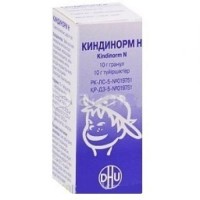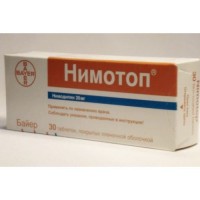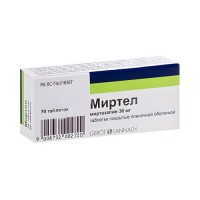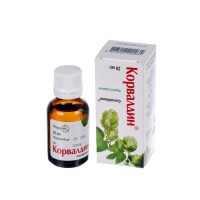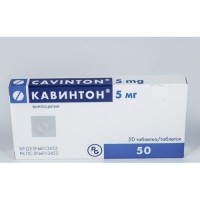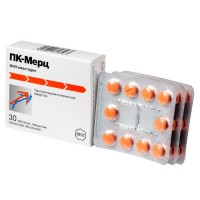Donormil 30s 15 mg coated tablets
- $19.80
The instruction for medical use of DONORMIL medicine the Trade name Donormil Mezhdunarodnoye the unlicensed name Docsilamin Lekarstvennaya the Tablet form, coated, 15 mg Structure One tablet contains active agent: a docsilamina succinate - 15 mg, excipients: lactoses monohydrate, sodium of a kroskarmelloz, cellulose microcrystalline, magnesium stearate, structure of a cover: a gipromelloza, dispersion of a pigment of Sepispers ARE 7001 *, a macrogoal 6000, the water purified. * Structure of dispersion of a pigment of Sepispers ARE 7001: a gipromelloza of 2-4%, the titan % CI77891 25-31 dioxide, propylene glycol of 30-40%, the water purified up to 100%. The description the Rectangular tablets of white color coated with a notch on both parties. Pharmacotherapeutic group Antihistaminic drugs of systemic action. Aminoalkilny ethers. Docsilamin. The ATX R06AA09 code the Pharmacological Pharmacokinetics Absorption Maximum Concentration properties in blood plasma (Cmax) is reached on average in 2 hours (Tmax) after reception of a docsilamin of succinate. Metabolism and removal averages Plasma elimination half-life of blood (Т½) 10 hours. Docsilamina succinate is partially metabolized in a liver by demethylation and N-acetylation. Various metabolites which are formed at disintegration of a molecule are not quantitatively significant as 60% of a dose are found in urine in the form of not changed docsilamin. Docsilamin's pharmacodynamics succinate is a blocker of H1 receptors of a class of the ethanolamines having sedative and atropinopodobny effects. It was shown that it reduces time necessary for backfilling and also improves duration and sleep quality. Indications - periodic/tranzitorny insomnia the Route of administration and doses the Recommended dose makes from 1/2 to 1 tablets a day. The pill is taken inside in 15-30 minutes prior to a dream. According to the recommendation of the doctor the dose can be increased to two tablets. Elderly people and in cases of a renal or liver failure are recommended to lower a dose. Duration of treatment from 2 to 5 days if insomnia remains, treatment has to be reconsidered. Side effects Seldom - drowsiness in the afternoon, dryness in a mouth, a disorder of vision, a constipation, a cardiopalmus, an ischuria. Contraindications - hypersensitivity to antihistaminic drugs - closed-angle glaucoma in the family anamnesis or the anamnesis of the patient - uretroprostatichesky disturbances with risk of an ischuria - the breastfeeding period - children's age up to 15 years. Medicinal interactions Undesirable combinations Alcohol enhances sedation of H1 - antihistaminic drugs. Easing of attention can constitute danger at control of vehicles and work with mechanisms. Avoid intake of the alcoholic beverages and medicines containing alcohol. Combinations which should be taken into account - atropine and medicines of atropinic action (tricyclic antidepressants, anticholinergic protivoparkinsonichesky drugs, spasmolytic atropina, Disopyramidum, fenotiazinovy neuroleptics) increase risk of development of such side effects as an ischuria, a constipation and dryness in a mouth. - other antidepressants influencing the central nervous system (morphine derivatives (anesthetics, antibechics and drugs of replacement therapy), neuroleptics, barbiturates, benzodiazepines, anxiolytics besides benzodiazepines, sedative antidepressants (amitriptyline, docsepin, mianzerin, mirtazapin, trimipramin), H1 receptors blockers with sedative action, antihypertensive drugs of the central action, Baclofenum, pizotifen and thalidomide) make the oppressing impact on central nervous system. Decrease in attention can constitute danger at control of motor transport and work with mechanisms. Special instructions can be the Cause of insomnia a set of factors which not necessarily demand intake of medicines. As drug contains lactose, it is contraindicated in cases of an inborn galactosemia, at a syndrome of disturbance of absorption of glucose and a galactose, a lactose intolerance. As well as all hypnotic drugs or sedatives, docsilamin succinate can aggravate earlier existing syndrome of a night apnoea (increase in number and duration of apnoeas). H1 - antihistamines should be applied with care at elderly people because of risk of a sedation and/or vertigo which can increase risk of falling (for example when people get up at night) with consequences which often are serious for this category of patients. As well as all medicines, a docsilamina succinate remains in an organism during about five elimination half-life. Elimination half-life can increase considerably at elderly people or at the patients having a renal or liver failure. At repeated use, drug or its metabolites reach equilibrium concentration much later and at much higher level. The efficiency and safety of this medicine can be estimated only on reaching equilibrium concentration. Dose adjustment can be required. At the elderly people having a renal or liver failure the increase in concentration of a docsilamin of succinate in plasma and decrease in plasma clearance can be observed. In these situations the dose adjustment towards its decrease is recommended. Pregnancy Drug should be used with care at pregnancy. Before use of drug consult with the attending physician. The feature of influence of medicine on ability to run the vehicle or potentially dangerous mechanisms Should pay attention to risk of emergence of day drowsiness at the persons running motor transport and working with mechanisms at administration of drug. Overdose Symptoms: drowsiness, excitement, expansion of pupils, accommodation paralysis, dryness in a mouth, face reddening and necks, a hyperthermia, sinus tachycardia, lacks of coordination of movements, a convulsive syndrome. Acute poisoning docsilaminy sometimes causes a rhabdomyolysis which can be complicated by an acute renal failure. This muscular disorder is not an exception that demands systematic determination of activity of a kreatinfosfokinaza (KFK). Treatment: symptomatic treatment. At an early stage of treatment it is recommended to apply activated carbon (50 g to adults, 1 g/kg of body weight to children). A form of release and packing On 10 or 30 tablets, coated, on 15 mg in a polypropylene tuba with a polyethylene cover. On 1 tuba together with the instruction for use in the Kazakh and Russian languages place in a cardboard box. To Store storage conditions at a temperature not over 30 ºС. To store out of children's reach! 3 years not to apply a period of storage after an expiration date. Prescription status According to the prescription UPSA SAS Producer, 304 Avenue du Doctor Jean Bru, 47000 Azhen, France. Owner of the registration certificate of UPSA SAS, 3 Rue Joseph Monie, 92500 Ryuey-Malmezon, France. The name and the address of the organization in the territory of the Republic of Kazakhstan, the accepting claim (offer) on quality of medicines from consumers, responsible for post-registration observation of safety of medicine Representative office of JSC Delta Medikel Promoushnz AG (Switzerland), 050040, Almaty, Bostandyksky district, Bayzakov St., 280

